Inakadate located in northern Japan rice field creates art in the country of the rising sun where rice farming has sustained the people of this village for two thousands years. The trend started in the early 1990s with small farmers planting several varieties of colored rice leaves, mixed with their regular rice in different patterns, creating various enormous images. The results reveal real 15’000 ft2 masterpieces. And then a few other farm fields in rural Japan joined in and it became a family affair as the villages of all generations joined in to hand-plant each rice shoot following the trend. Three months later, the rice fields were transformed to look their best ever! Sadly the rice paddy can’t last forever, the art will be be visible until each September, when harvest wipes the field clean.
A former city worker, Koichi Hanada said, that before, the art villages only had each other to talk to. Now people all over Japan know this place, and annually this small corner of the country with just 8’400 inhabitants, received about 170’000 visitors. Art submissions from all over Japan are coming in because of this huge success that’s lead to inevitable imitations of murals madness, flourishing in paddies across Japan.
Don’t keep these awesome pictures and the stories to yourself … share them!
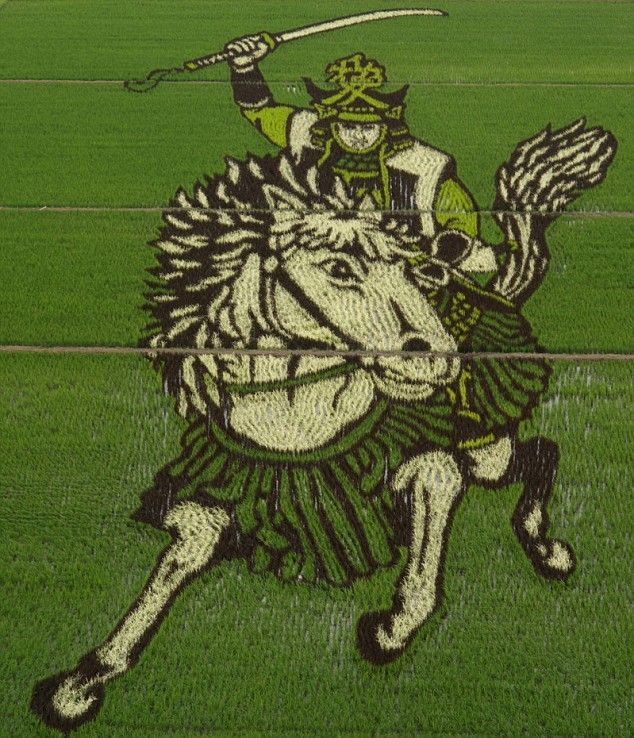
A Sengoku warrior on horseback has been created from hundreds of thousands of rice plants. The colors are created by using different varieties. This photo was taken in Inakadate, Japan.
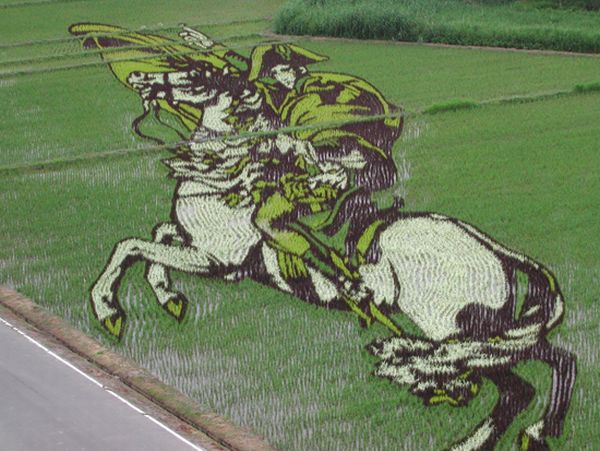
Napoleon on horseback can be seen from the skies. This was created by precision planting and months of planning by villagers and farmers located in Inakadate, Japan.
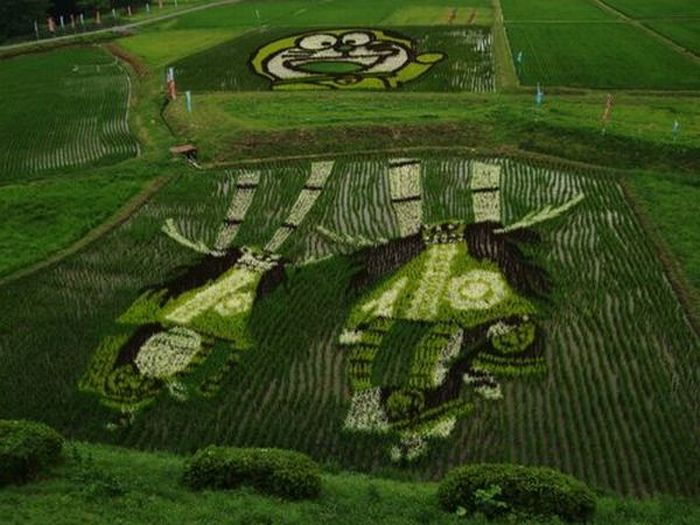
This year, various artwork has popped up in other rice-farming areas of Japan, including designs of deer dancers. Smaller works of crop art can be seen in other rice-farming areas of Japan such as this image of Doraemon and deer dancers. The farmers create the murals by planting little purple and yellow-leafed Kodaimai rice along with their local green-leafed Tsugaru, a Roman variety, to create the colored patterns in the time between planting and harvesting in September. The murals in Inakadate cover 15’000 square meters of paddy fields.
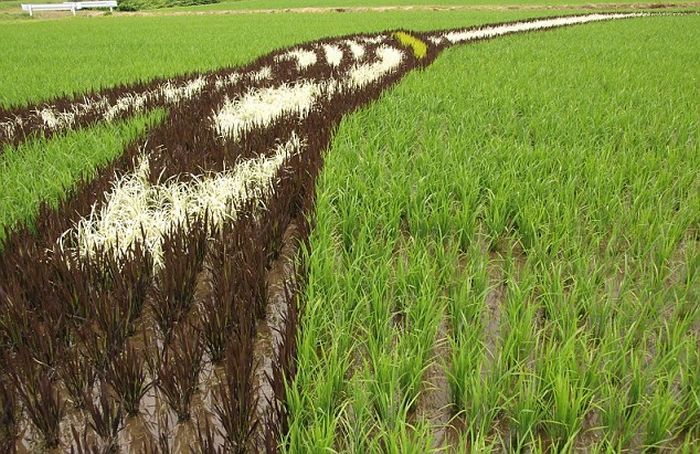
Stunning crop art has sprung up across rice fields in Japan, but this is no alien creation. The designs have been cleverly planted. Farmers creating the huge displays use no ink or dye. Instead, different color rice plants have been precisely and strategically arranged and grown in the paddy fields. As summer progresses and the plants shoot up, the detailed artwork begins to emerge.

Fictional warrior Naoe Kanetsugu and his wife, Osen, whose lives are featured on the television series Tenchijin appear in fields in the town of Yonezawa in the Yamagata prefecture of Japan.
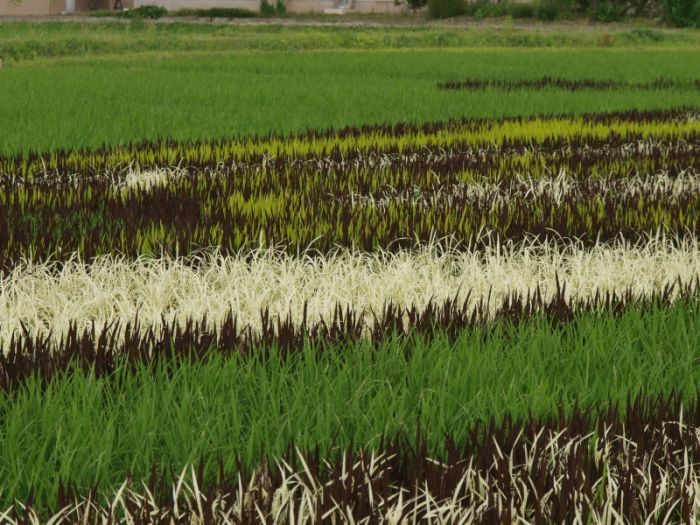
From ground level, the designs are invisible, and viewers have to climb the mock castle tower of the village office to get a glimpse of the work.

Closer to the image, the careful placement of the thousands of rice plants in the paddy fields can be seen. Rice-paddy art was started there in 1993 as a local revitalization project, an idea that grew from meetings of the village committees. The different varieties of rice plants grow alongside each other to create the masterpieces. In the first nine years, the village office workers and local farmers grew a simple design of Mount Iwaki every year. But their ideas grew more complicated and attracted more attention. In 2005, agreements between landowners allowed the creation of enormous rice paddy art. A year later, organizers used computers to precisely plot planting of the four differently colored rice varieties that bring the images to life.
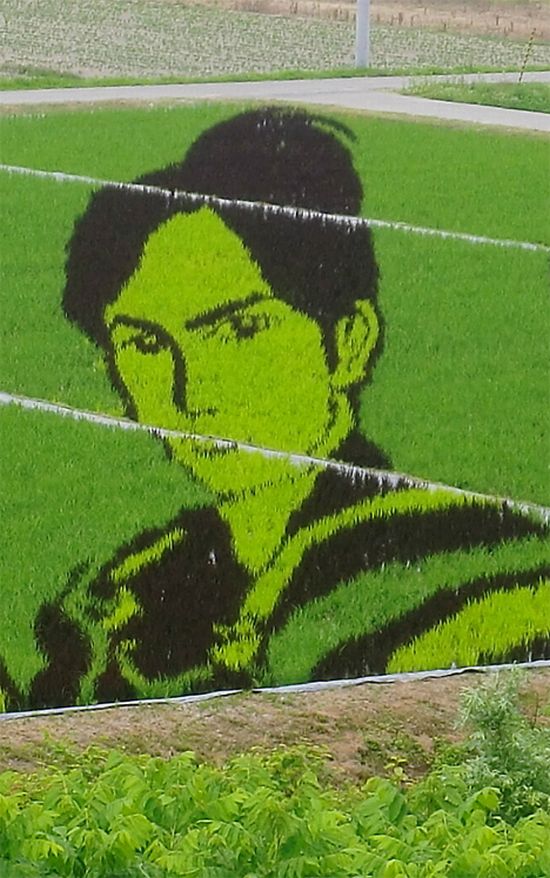
I have to say that this story is really cool and inspiring! The photos are incredible…
Thanks again for sharing with us.
This story is just amazing! I didn’t know about it. Kudos
David
I really enjoyed reading this story! I will repost in my blog if it’s okay with you…
Cheers!!
Beautiful pictures and interesting story! Thanks for sharing with your readers.
I really enjoyed this article and the photos! Keep up the good posts coming…
Interesting article and great photos! Thanks for sharing…
Great photos! Soo cool and the story is very inspiring…
Great article and your blog template is so cool!!
Great blog and pictures!!
Awesome story and photos! I’ve really been enjoying your blog!
Interesting story and photos!! Keep it up…
Great story and photos! Very happy to find it.
The first picture is really cool!
I like this post and the photos, especially the Napoleon! Thanks for sharing.
Tony
I really enjoyed these amazing photos!
These pictures are so great!
Amazing article and pictures…
Cheers!